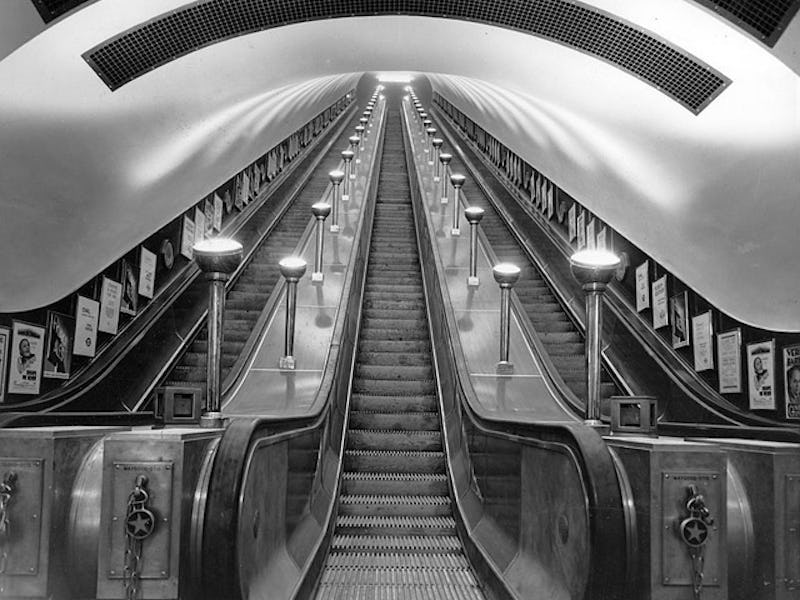Isaac Asimov's Suburban Subterranean Paradise Really Wasn't All That Implausible
In 1964, the king of science fiction imagined a darker, happier world.

“There is an underground house at the fair which is a sign of the future. If its windows are not polarized, they can nevertheless alter the “scenery” by changes in lighting. Suburban houses underground, with easily controlled temperature, free from the vicissitudes of weather, with air cleaned and light controlled, should be fairly common.” - Isaac Asimov, 1964
In 1964, Isaac Asimov penned a predictive classic to celebrate the New York World’s Fair, imagining a prosperous 2014 America. Asimov was interested in where we’d be living and was convinced we’d be underground or underwater. The underwater houses were a reach — perhaps a product of a Jacques Cousteau fascination with marine exploration. The underground bunkers were less implausible. He wasn’t wrong when he pointed out that the surface could be “given over to large-scale agriculture, grazing and parklands, with less space wasted on actual human occupancy.” But that never came to pass. Why?
Before we go into why the human race hasn’t gone suddenly, massively, and willingly subterranean, it’s important to understand that on a fundamental level, this isn’t a bad idea. In fact, people are living in underground homes all over the world. It’s just not a trend as such. The demand for above-ground city apartments remains high, but most current underground housing can be found in places where housing shortages exist — places like Beijing, for example, where millions live underground without providing any additional agricultural space.
Asimov was really making a point about the suburbs, which still had that new car smell in the mid-1960s. And, like Asimov points out, there would be real benefits to underground living away from urban areas. Temperature control and being able avoid the punishing effects of storms are certainly benefits, particularly in places with very harsh climates. There are efficiencies that come with living underground as well, mostly drawn from the protective nature of, well, dirt.
For the most part, the fact that were not living underground en masse doesn’t have anything to do with the fact that it’s not feasible. In some ways, it would be a whole lot better. For the most part, the reason why we haven’t gone totally underground is because as humans, it’s not an especially attractive option. We tend to like fresh air and natural light. Underground spaces aren’t exactly inviting and homey by nature. More than that, though, being underground taps into a baser fear or instinct of being buried alive, which doesn’t necessarily scream “rest and relaxation.”
It takes a lot of infrastructure to make an underground house an underground home, and building an unground colony that doesnt feel like bunker meets subterranean shopping mall is going to be expensive. Humans still like the option of getting some fresh air, and it turns out that natural light is pretty important for mind, body and soul, so Asimov’s windowless future is something of a non-starter, too. Particularly now that the internet has many of us spending more and more time indoors.
Maybe if we could find a way to make underground houses simple, affordable and socially acceptable options, we’d be following China’s lead and building down as much as we build up. Maybe if humans weren’t creatures accustomed to light and fresh air, wed be pretty happy dwelling beneath the soil. Maybe in an alternate future.